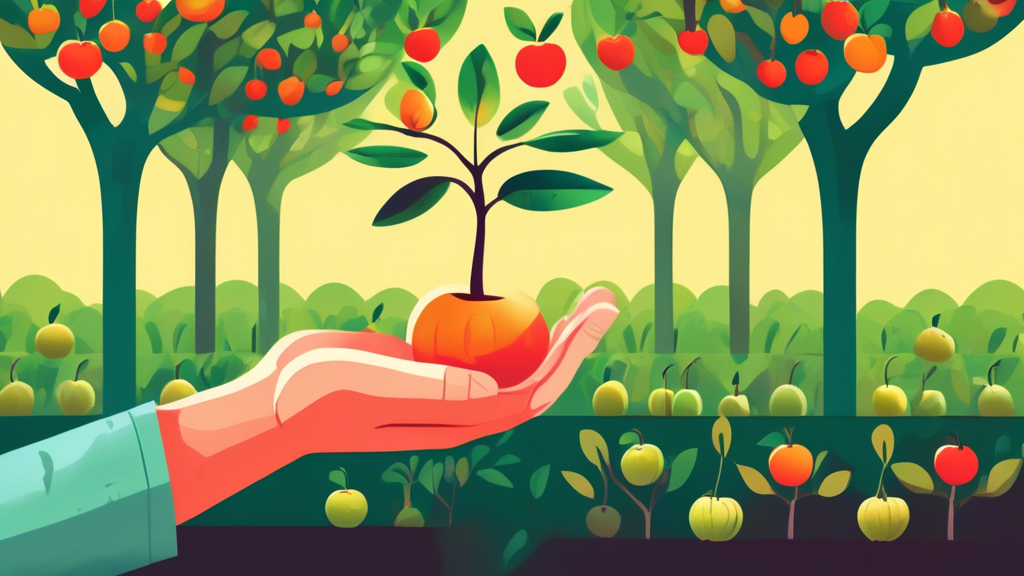
The Daily and Weekly Maintenance Checklist
Keeping your hydroponic system in top shape requires consistent attention. This checklist covers the essential tasks to prevent common issues and ensure your plants thrive.
Monitoring and Adjusting pH Levels
Fluctuating pH can lock out essential nutrients, causing deficiencies even in a nutrient-rich solution. This is a frequent frustration for growers who see their plants struggle despite providing everything they think is necessary.
For most hydroponic plants, maintain a pH between 5.5 and 6.5. Use a digital pH meter or test drops to check levels daily and adjust using pH up or down solutions.
Checking and Managing Nutrient Strength (EC/PPM)
A solution that is too concentrated can “burn” plant roots, while one that is too weak will starve them of vital elements, stunting growth.
Measure the Electrical Conductivity (EC) or Parts Per Million (PPM) of your nutrient solution with a meter. Adjust the concentration based on your plants’ growth stage:
- Seedling Stage: Lower EC/PPM (mild solution)
- Vegetative Stage: Medium EC/PPM
- Flowering/Fruiting Stage: Higher EC/PPM
Inspecting Plant Health Proactively
Make a habit of daily visual inspections. Look for early warning signs like yellowing leaves, spots, or unusual markings, which can indicate pest infestations, diseases, or nutrient imbalances before they become severe problems.
Ensuring Proper Water and Oxygen Levels
Regularly top off your reservoir with fresh, pH-balanced water to maintain volume. Check that air stones and water pumps are functioning correctly to ensure roots receive ample oxygen, which is critical for preventing root rot.
Advanced Optimization for a Thriving Garden
Once maintenance is under control, these strategies will elevate your garden’s performance, leading to faster growth and higher yields.
Optimizing Environmental Controls
Lighting: Ensure your lights provide the correct spectrum and intensity (measured as PPFD). Maintain the proper distance from the plant canopy to avoid light burn or causing plants to stretch weakly.
Temperature & Humidity: Aim for the Vapor Pressure Deficit (VPD) sweet spot. VPD measures the drying power of the air and is crucial for optimal plant transpiration and nutrient uptake.
Air Circulation: Use oscillating fans to strengthen plant stems and prevent stagnant air, which can lead to mold and mildew.
Pruning and Training for Maximum Yield
Employ techniques like Low-Stress Training (LST) to gently bend stems, creating an even canopy. “Topping” the main stem encourages the plant to grow multiple colas, increasing the number of bud sites and overall yield.
Root Zone Optimization and Care
Healthy roots should be white and free of any foul odor. Periodically perform a full system flush with plain, pH-balanced water to prevent the buildup of nutrient salts, which can harm root health and block nutrient absorption.
Hydroponic System Deep Clean & Reset
Over time, systems can accumulate algae, biofilm, and mineral deposits. A thorough clean is essential for long-term health.
When and Why to Perform a Deep Clean
Schedule a deep clean if you notice slime, algae growth, clogged lines, or if your plants are consistently unhealthy despite correcting other factors.
Step-by-Step Cleaning Guide
- Drain the entire system of nutrient solution.
- Use a safe cleaning agent like a diluted hydrogen peroxide solution or a mild bleach mix (rinse thoroughly afterward).
- Scrub all components—reservoir, pumps, net pots, and tubing—to remove all debris.
- Rinse everything thoroughly with clean water before refilling.
Comparing Hydroponic Systems: Maintenance & Optimization Focus
Different systems have unique requirements. Understanding your system’s specific needs is key to efficient maintenance.
| System Type | Maintenance Intensity | Key Optimization Focus |
|---|---|---|
| Deep Water Culture (DWC) | Low-Moderate | Oxygenation. Ensuring air pumps are always running and powerful. |
| Nutrient Film Technique (NFT) | Moderate | Flow Rate & Slope. Preventing clogs in the channel and ensuring a thin film of nutrient solution. |
| Ebb and Flow (Flood & Drain) | Low-Moderate | Timer Accuracy & Pump Health. Ensuring reliable flood/drain cycles. |
| Aeroponics | High | Mist Nozzle Maintenance. The most critical task; nozzles must be kept clean and unclogged. |
Pro Tip: The “Beneficial Bacteria” Boost
Many growers don’t realize that hydroponics can benefit from a living ecosystem. Introducing beneficial bacteria and mycorrhizal fungi creates a protective biofilm on the roots. These “good microbes” outcompete harmful pathogens for space and food and can significantly enhance nutrient absorption by forming a symbiotic relationship with the plant roots. This biological approach can dramatically increase plant resilience and growth rates.
Frequently Asked Questions (FAQs)
How often should I completely change the nutrient solution in my hydroponic garden?
A general rule is to change the solution every 1-2 weeks. However, this can vary based on plant size, system volume, and how quickly the plants are drinking. Change it immediately if the EC/PPM becomes difficult to stabilize or the solution appears cloudy.
What is the most common mistake beginners make when maintaining their garden?
The “set it and forget it” approach. Hydroponics demands consistent, proactive monitoring. Neglecting daily checks of pH and nutrient levels is the fastest path to encountering serious plant health issues.
Can I use organic nutrients in my hydroponic system?
Yes, but it requires careful management. Organic matter can clog fine misters in aeroponic systems and small water pumps. It’s often most successful in systems like Deep Water Culture (DWC) where added aeration and beneficial bacteria can help break down the nutrients into a form plants can use.
My plants are growing slowly. What’s the first thing I should check?
Start by diagnosing the environment. Check if temperature, humidity, and light intensity are within the optimal range for your plants. If the environment is correct, then investigate the root zone for issues like discoloration, high water temperature, or low oxygen levels. Often, the root cause is environmental rather than purely nutritional.






